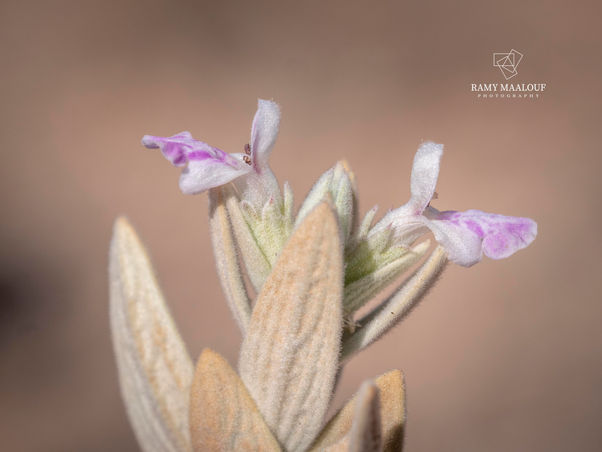Family |
Lamiaceae
Stachys palaestina
L.
Leb. Syr. Pal.
Stachys palaestina L.
(First published in Sp. Pl., ed. 2: 1674; 1763)
• Life-form & habit: Suffruticose, much-branched plant, with somewhat thick, rigid, appressed-canescente stems, 20–60 cm tall.
• Leaves: Sessile, rugose, appressed-canescente above, whitish beneath with prominent venation; entire, amplexicaul, oblong to lanceolate, obtuse to acute, mucronate, especially in the upper parts. Floral leaves ovate or rhomboid, surpassing the calyx.
• Inflorescence & flowers: Pseudo-verticils of 4–6 (rarely 2) flowers, lower ones somewhat distant, upper ones closer, forming a leafy spike. Bracts very short, setaceous. Calyx sessile, tubular-campanulate, somewhat tomentose; teeth triangular-ovate, slightly spinose, three times shorter than tube. Corolla pink, slightly hairy, tube somewhat exserted.
• Fruit: Nutlets not described in detail by Mouterde.
• Phenology: Flowers May–September.
• Habitat & elevation: Rocky habitats.
• Lebanese distribution: Sir-ed-Dennié, Douma, Ebrine, Qpzhaïa, Qannoubine, Dimane, ‘Aïn Sindiané, Zahlé, Hermel (above), El-Biré, Joub Jennine, Kamed-el-Loz, Hammara.
• Syrian distribution: ‘Aïn Cha‘ara, Ma‘ara, Et-Tell, Saïdnaya, Qtaifé, Jabal Qasyoun, Damascus environs, ‘Aïn Figé, Serghaya, Jabal Daoua.
• Native range: Lebanon, Syria, Palestine. (POWO)
⚠️ Taxonomic note: Mouterde (1983, vol. 3, p. 151; Pl. LXXII nº 3) treated Stachys palaestina as a well-delimited Levantine taxon, clearly separated from allied Stachys nivea and S. paneiana by its suffruticose habit, appressed-canescente indumentum, entire mucronate leaves, and pink corolla with slightly exserted tube.





